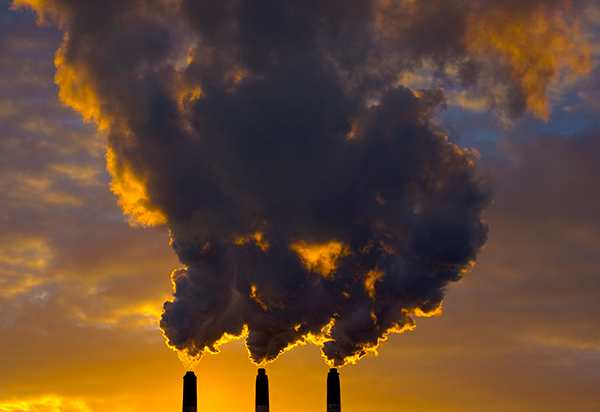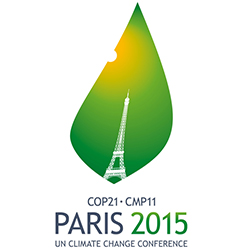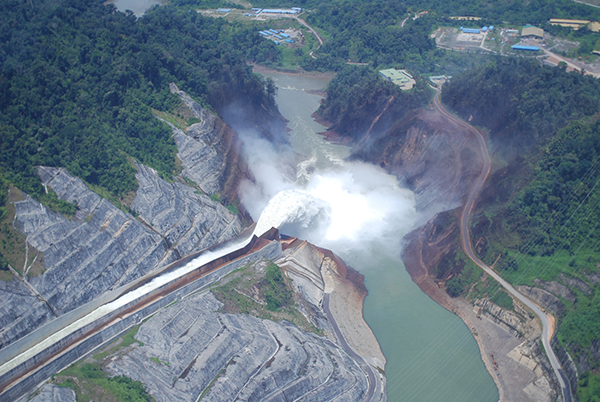
Chimney stacks release polluting gases.
THE 2015 United Nations Conference on Climate Change, held at Le Bourget, Paris from Nov 30 to Dec 12, certainly had 25,000 delegates from 196 nations on fire. The logo for this vital conference was a green gas flame pointing skywards with sunbeams coming from the top left and an effigy of the iconic Eiffel Tower emblazoned in the middle of the flame.
As we know, this Paris landmark was built of steel in the 19th century and thus manufactured by coal-burning steel furnaces emitting huge amounts of carbon dioxide (CO2) and other greenhouse gases into the atmosphere.
My column in thesundaypost on Jan 3 suggested cautious optimism that an agreement would be universally accepted to attempt to limit global warming to 2 degrees above pre-industrial revolution levels by the turn of this century.
The conference committee worked far into the night and into the early hours of many a morning to try to reach some accord acceptable to both developed and developing nations.
At one stage the talks were about to flounder when the American President Barack Obama and his China counterpart General-Secretary Xi Jinping decided that the time was ripe for both these super powers to agree to the UN Committee’s recommendations.
This was an amazing gesture from the two top greenhouse gas producers in the world.
That, together with the impassioned plea by the Marshall Island’s Foreign Minister to wake the world up to the plight of his Pacific coral atoll group of islands, with ever-rising sea levels and eventual population migration, brought the conference alive. Similarly, the Maldives in the Indian Ocean may be there today and gone tomorrow for the same reason.
Whether an almost unanimous agreement, at the end of the conference, to reduce carbon and greenhouse gas emissions and thus lower world temperature increases to 1.5 degrees by 2050, will be ratified and legally binding is a matter for each nation’s social conscience and for the heritage that is left to future generations.
Many atmospheric scientists and climatologists maintain that, to reach this goal, all nations would be required to record zero greenhouse gas emissions from 2030 to 2050 or even by 2020.
 Key points
Key points
l All countries must aim to keep the increase in global temperature below 2 degrees Celsius above pre-industrial levels and try to limit it to 1.5 degrees Celsius by 2100.
l Global increases in temperature will be reviewed every five years with each country taking stock of its greenhouse emissions.
l All countries will, at these meetings, provide ‘a nationally determined contribution’ on their emission targets.
The long-term goal will allow countries to emit greenhouse gases providing that the equivalent amount of their emissions is removed from the atmosphere by ‘green methods’ such as planting of trees and reforestation programmes to naturally absorb carbon dioxide.
The costs? No total sum was set as to how much developed nations will pay developing countries for the latter to change to green energy.
Mitigation costs. Developed countries will help pay developing countries to recover from storm and flood damages caused by climate change.
The future
The next climate change conference will be held in 2023. There all participating nations will have to submit to the UN all details reflecting “their highest possible ambitions” for their progress towards their goals in reducing greenhouse gas emissions in their respective countries. There could well be a public naming and shaming on the world stage in 2023 of those nations who promise but in reality seldom deliver.
Each nation will present a five-year progress report together with its vision for the subsequent five years. Clearly, recorded actions will speak louder than words in their plans. We shall see.
Recently
It is thanks to the Paris Conference that details of the emissions of carbon dioxide into the atmosphere have now become transparent and in the public domain.
Between 1990 and 2012, China surpassed all countries, followed closely by the USA, India, Japan, South Korea and Canada, in increasing their respective carbon emissions.
The UK has slightly reduced its input because of its Climate Change Act, which legally commits it to drastically reducing greenhouse gas emission to 80 per cent of the 1990 levels by 2050. This was one of the strongest declarations of any nation at the Paris Conference.
Malaysia has shown a slight increase mainly owing to oil and natural gas exploration and indiscriminate burning.
Recently I purchased diesel fuel for my car in the UK at less than 99 pence per litre (less than RM6 per litre). Last year I paid one and a half times that price.
What has happened in the world oil markets?
This lowering of oil prices will reverberate around the world with all countries seeking tax revenues on basic commodity sales.
Obviously transport fuel costs for goods are reduced but with VAT (value added tax) in the UK now running at 20 per cent, and GST in Malaysia, commodity prices still remain high.
With very recent embargoes lifted on the import of Iranian oil, from one of the major oil producing nations, we should all shortly be swimming in litres of oil, which will be cheaper than a bottle of water.

Hydroelectric power is one of the sources of green renewable energy.
Knock-on effect
Decreasing oil prices will see greater greenhouse emissions as consumers will burn more oil in vehicles, industrially, commercially and also domestically in keeping their houses and offices warm during winter. Cheaper oil prices will allow oil-powered electricity stations to produce, theoretically, more electricity whilst those nations producing oil will see cutbacks in the numbers of their workforce.
This could see the demise of many European governments’ plans to exploit oil shale deposits in their countries via the fracking process.
Equally, governmental plans for the creation of cleaner electricity via wind turbine farms could collapse. Interestingly, the government wind turbine projects in the UK only generate electricity for 10 to 20 per cent of the year.
In South West England, former green meadows in farmer’s fields have been plastered by huge clusters of grey solar electricity generating panels – functional, but eyesores on a landscape.
Perhaps many countries in Europe could follow France’s example in decarbonising electricity production and fossil fuel energy production.
In 2012, France produced more than 90 per cent of its electricity from hydroelectric, wind and tidal power stations. France was indeed the model country in which to hold the Climate Conference.
Nations tend to dismiss nuclear power for fear of radiation leaks as epitomised by the Chernobyl disaster in the once Russian Ukraine in 1986, and by the more recent tsunami that hit Japan at Fukushima in 2011.
With increasing technology enabling us to dispose of spent isotopes or recycle them and with greater knowledge on the ocean’s tidal powers and in establishing offshore clusters of wind turbine farms, together with utilising the hydroelectric potential of many nation’s natural resources, the target set out by the Paris Conference can be met.
Where there is a will there is a way despite the effects of global warming added this year by the strongest El Nino event in history.
